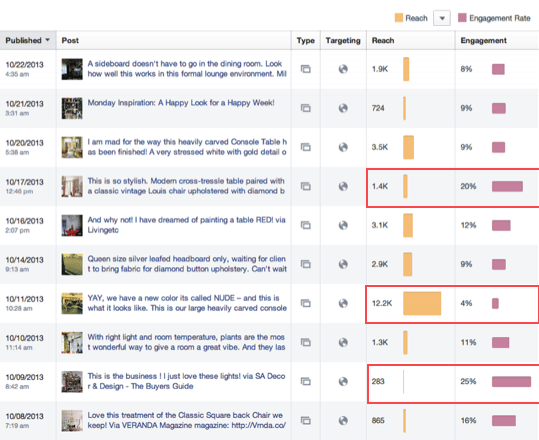
13 Common Social Media Mistakes Every Company Makes
With over 3 billion people using social media globally, it’s safe to say that certain social platforms can be a gold mine for your B2B business’s lead generation efforts. However, some digital marketers may not be utilizing this channel to its full potential.
Becoming a well-rounded B2B marketer means conquering your way through social media. Behind every business are real people; social media provides an avenue to not only market your brand, but humanize it and establish a valuable connection with B2B consumers.
Here are the typical blunders B2B marketers make in their approach to social media and how to correct them:
1. Using Social Media as a Direct Response Vehicle
The reason for much of the success from B2C marketers is that the majority of their products are impulse purchases (i.e. Rita’s Water Ice tweeting about their flavor of the month on a hot summer day). For B2B companies, social media is more about interaction and knowledge sharing (think white papers, videos, thought leadership blogs, etc.).
2. Expecting Instant Results
Social Media is not a one-way street and requires time to build trust and relationships within a community.
3. Failing to Invest Sufficient Time and Effort
In order to build relationships it takes a considerable amount of time and energy to maintain your Social Media presence. B2B companies that succeed are those that have a clear objective and implement a strategy based on market research and a commitment to seeing their efforts through to completion.
4. Not Being Consistent
Everyone’s on social media, that is both a good and a bad thing. It’s critical to keep a consistent posting schedule to save yourself from being outmaneuvered by other marketers who are more aggressive. However, that’s not to say that you should post at every hour of the day. That practice might hurt you in the long run—no one wants spammy content on their feeds.
Setting limits to the frequency of post can help reach your audience and maximize potential without going overboard. Aim to post regularly and allot time to engage with your prospects when you are not actively posting.
5. Highlighting Reach Rather than Engagement
Are you taking advantage of micro-conversations with leads? Providing content that is relevant and engaging on your branded social media platforms is the first step, but are you simply tracking reach and not engagements? Are you actively responding to these engagements?

It is important to engage with your audience and keep conversations going. Developing a new following is important to brand awareness, don’t neglect to address followers who have previously shown loyalty to your company. Creating a dialogue shows that you care for your prospects versus climbing up the social media ladder.
6. Focusing Internally
As mentioned earlier, social media is not a one-way street and it requires you to listen and interact. Focusing solely on your own agenda will not help you grow your audience – you MUST provide value to the community.
7. Not Building Networks or Using Syndication
This is not the “Field of Dreams” (if you build it, they will come). While great content is extremely important, it is essential to use your blog, Twitter/LinkedIn accounts, and other social media tools to build a group of influencers that will amplify your content.
8. Measuring the Wrong Metrics for Social Media ROI
Having a lot of followers is a good thing—however, they don’t always translate to great performance. It is important to preserve current followers and engage new followers to your brand. Lead generation is the first step in nurturing prospects through your sales funnel; you want to attract as many followers as you can for this process to begin.
Look into metrics such as clicks to find out if your posts are doing well enough for your audience to take action. Check your website traffic to spot if the source comes from social media. If yes, break it down further and find out which platforms are the most popular. Finally, use this data to do optimize your next social lead generation campaign.
9. Creating Similar Content for All Platforms
Facebook, LinkedIn, and Twitter may all fit within the social media category, but they serve very different functions and attract diverse segments of users. Just because they are in the same category does not mean your brand should post the same type of content on each one. It’s critical to study the nature of top performing posts per platform in order to create strategies that incorporate the most relevant content subjects, formats, and messaging.
For instance, Twitter thrives on short and catchy copy due to its 280-character limit. Facebook allows for more content, short videos typically get more engagement versus other posts. LinkedIn is a professional space; a straightforward caption and link would be better here. Understanding these nuances will provide a guideline for when repurposing content and presenting it in numerous exciting formats to your audience.
10. Forgetting Social Media Ads and Re-marketing
That’s right, you can get a boost with strategic advertising. This strategy wasn’t prevalent in the early years of popular B2B social media, but it’s time to face the music. Some even say that organic reach is dead. Learning about social media ads is crucial in your quest to connect with the right audience.
Here’s what you can do; perform A/B testing efforts on several campaigns, explore your analytics and ad tools, focus on re-targeting to audiences that have already visited your website, social media pages, or seen your posts. You can also take courses to increase your proficiency and optimize your ad spending.
11. Ignoring Synergy Between Different Channels
It is important that you do not silo your social media activities from your corporate website, public relations activities or your online marketing campaigns. Each of these is an opportunity to grow your presence and cross-linking is highly recommended.
12. Not Being Serious about Social Listening
You’re not just out there to post on social media—it’s your job to listen, too. Social listening means paying attention to your audience. What are your followers saying about your service? What are the relevant concerns in the industry that you may be able to address? You can use hashtags, groups, and advanced search methodologies to “listen” in on conversations about your business, its services, your competitors, and the industry. Utilize this social listening data to devise and optimize social media campaigns that address the topics, challenges, and needs of your target personas.
13. Skipping Data Analysis
Analytics should be every marketer’s best friend. You may be putting a lot of effort into your social posts, but it won’t matter if you’re not keeping track of relevant KPIs and metrics. Establishing and monitoring social media specific KPIs will help you understand if your current strategy is effective both on social and off. After all, aren’t you doing this to drive awareness, engagement, and leads? So always keep in mind that your social media posts for lead generation differ from those posted for awareness and thought leadership.

Source: https://www.dummies.com/business/marketing/lead-generation/lead-generation-establish-goals-after-defining-your-key-metrics/
Study the characteristics of your best posts, such as format, engagement, reach, clicks, conversions, and time posted. Having a strategy that’s backed with data will make your social media posts fresh, relevant, and impactful to your audience.
Time to Get Social
Are you guilty of some of these mistakes? Fortunately for you, it’s not too late to change your ways. Following the counter tips above will help you develop better strategies and tap into your social media audience more than ever!






